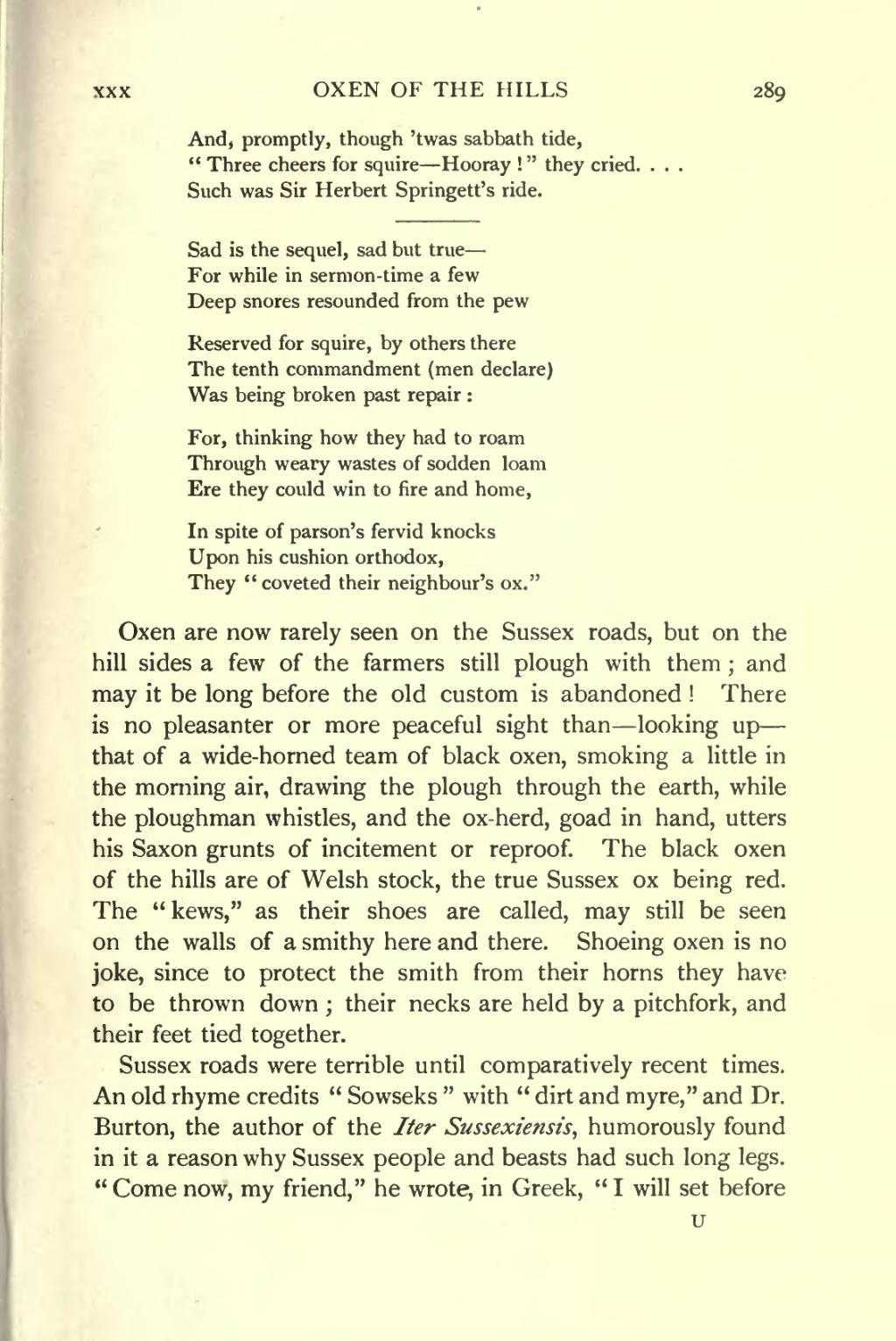|
And, promptly, though 'twas sabbath tide, Sad is the sequel, sad but true— |
Oxen are now rarely seen on the Sussex roads, but on the hill sides a few of the farmers still plough with them; and may it be long before the old custom is abandoned! There is no pleasanter or more peaceful sight than—looking up—that of a wide-horned team of black oxen, smoking a little in the morning air, drawing the plough through the earth, while the ploughman whistles, and the ox-herd, goad in hand, utters his Saxon grunts of incitement or reproof. The black oxen of the hills are of Welsh stock, the true Sussex ox being red. The "kews," as their shoes are called, may still be seen on the walls of a smithy here and there. Shoeing oxen is no joke, since to protect the smith from their horns they have to be thrown down; their necks are held by a pitchfork, and their feet tied together.
Sussex roads were terrible until comparatively recent times. An old rhyme credits "Sowseks" with "dirt and myre," and Dr. Burton, the author of the Iter Sussexiensis, humorously found in it a reason why Sussex people and beasts had such long legs. "Come now, my friend," he wrote, in Greek, "I will set before
